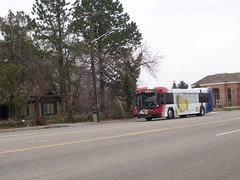While going through the changes that will take place to bus service on April 26th, I noticed that UTA is quietly adding bus stops to many of the fast buses that were started in August.
When these bus routes first started, I pointed out that the negligibly increase in speed would not make up for the loss of potential riders due to fewer bus stops. For example my wife works at 3500 East and Bengal Blvd just around the corner from Smith’s. The old 32 bus used to provide direct service from our home to her work. The few times I took her to work I noticed that there was passenger standing at every bus stop along Bengal Blvd to catch the 32. How many of these people still took the bus when faced with a much longer walk just so the bus could be a few minutes faster?
What it comes down to is that the market potential for the slightly faster service does not equal the market penetration of the additional stops. This brings into question how well the 3500 South BRT line will do considering it is replacing the 35, not supplementing it.
UTA is not the only one to fallen into this trap. Amtrak the company that never learns from its history keeps making this mistake. On the northeast corridor between Washington DC and New York it has tried a non-stop or one stop express train several times in order to save a few minutes between the two points. However, every time they try it the train is discontinued in about a year because the time savings (most recently 10 minutes) does not justify the loss of riders from making fewer stops.
Metro in Los Angeles made the same mistake with the Gold Light Rail line. It created an express service but once again the time savings was not enough to justify not stopping. The train loadings become very uneven and this express service quietly died in the latest changes at Metro.
So how does this compare to Europe and Japan who are building a bunch of high speed rail lines or New York City that offers express subway trains?
Do you really think that France and the rest of Europe plus Japan just decide to build a high speed line for the fun of it, or because it would be cool? When they decide on which lines to build a high speed line they look at rail routes that are at capacity already. For example the first TGV route in France was between Paris and Lyon. This route was running over capacity so something had to be done so they built a new rail route. In addition, the TGV did not replace the regular trains between Paris and Lyon, it supplemented them.
In New York the situation is the same. The express subway service supplements the existing local subways that are already at capacity.
So when should fewer stop service be implemented?
Only to supplement existing service when that service is at capacity or you create a line were the time savings will create new marketing dynamics.

No comments:
Post a Comment